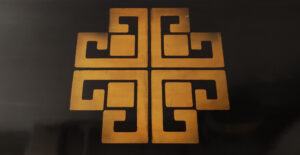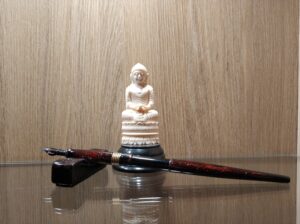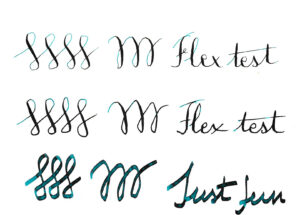Berlin Notebook Blue no. 1
After a numb polite greeting the clerk left to look for his Landlord and urged to sit down and wait. So there I was left alone, sitting in the old couch of the immense entrance hall.
When looking around I noticed that the last renovation works in this part of the manor must date from before the Great Rising. There were some antique light bulbs that gave a chattered light and left most of the place in a dark shadow. A small part near the rear corner was extra lit and the floor in that part was seemingly made of wood, indicating that in a distant past this house belonged to a very wealthy family. I almost felt the urge to get up to touch the wood and check if it’s real. And suddenly I wondered if I even could remember the feeling. The last time I had a chance to touch some real certified wood in the museum was already like a long forgotten memory. No, I held strong and stayed in the couch. This mission was too important to offend the Landlord by touching his wood.
If I succeeded, I could lay my hands on a far more precious material. One drop of this almost mythical substance was enough to use as exchange for a wooden board of at least 10 inch. Still I wasn’t certain if the substance really existed or if this mission was just based on some twisted rumours whispered by the Elder in their sleep. Some Elder called it ‘the blue ink’ others referred to it as ‘no.1’.
My testing set up
When Berlin Notebook was looking for people to test their new ink, I volunteered. A few days later I received a free sample. For ecological reasons Berlin Notebook uses glass and not plastic sample vials, so I was happy to find out that the vial didn’t break and the postman/postwoman didn’t get some inked fingers.
I know there are many ways to test an ink. Taking swabs with various materials is a possibility. Making chromatography like samples or artwork. Or you could just write with it and see how it behaves.
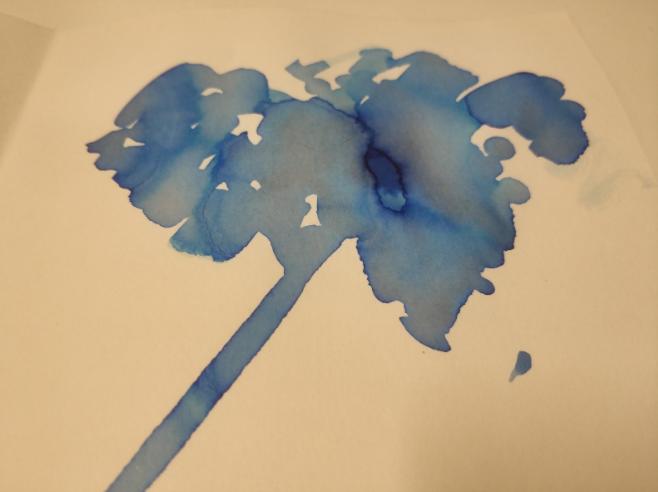
For me the last option is the best. So I inked up two totally different pens. An Osprey Scholar with flex-insert
(G-flex nib) and a Sheaffer Valor with M nib. I used these pens on different kinds of paper and over a few days’ time.
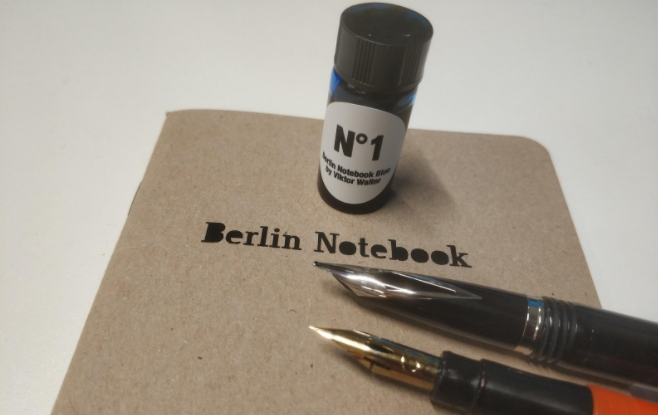
The colour
It is a descent blue for everyday use. Depending on the paper and pen the colour varies between traffic blue (RAL5017) and night blue (RAL 5022). Dry nibs and absorbing paper will give a lighter blue, but in most of the cases you get a full and warm darker shade of blue.
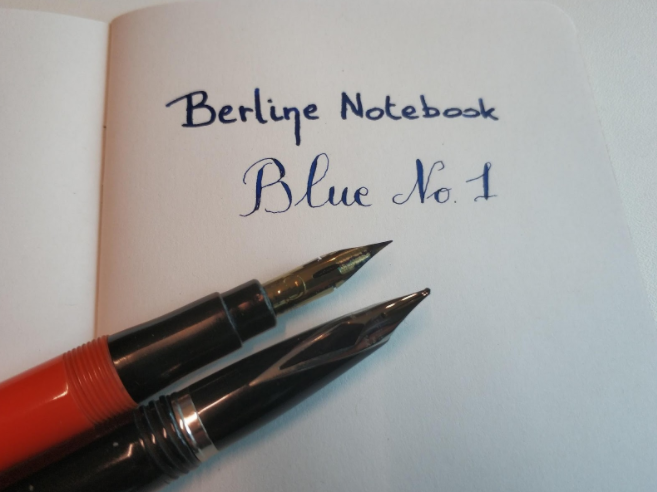
The sheen
There is a minor sheen component in the ink. On real smooth paper like Tomoe River you can see there is a minor purple to red sheen. It is certainly not a sheen monster, but it gives some extra without being to exuberant.
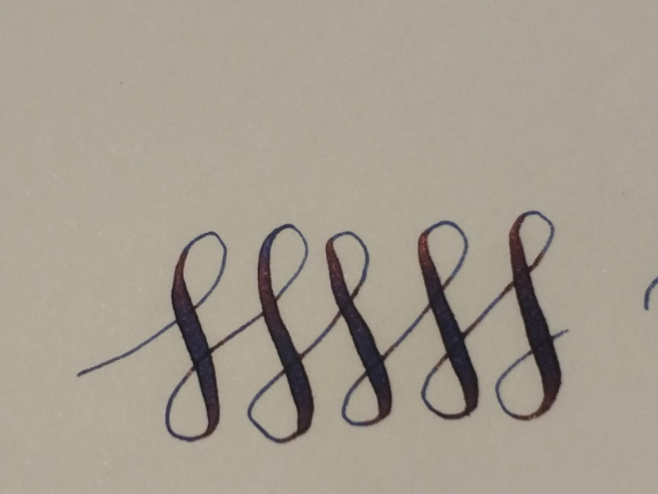
Drying times
Slow drying inks are sometimes an issue when using them on high end paper like Tomoe River. You all know the stories of crazy sheeny inks that need more than an hour to dry on TR and the challenges that go along with this situation. This ink isn’t like that, it dries rather fast. Even when using the wet M nib of the Sheaffer on TR, the ink almost fully dried after 2 minutes.
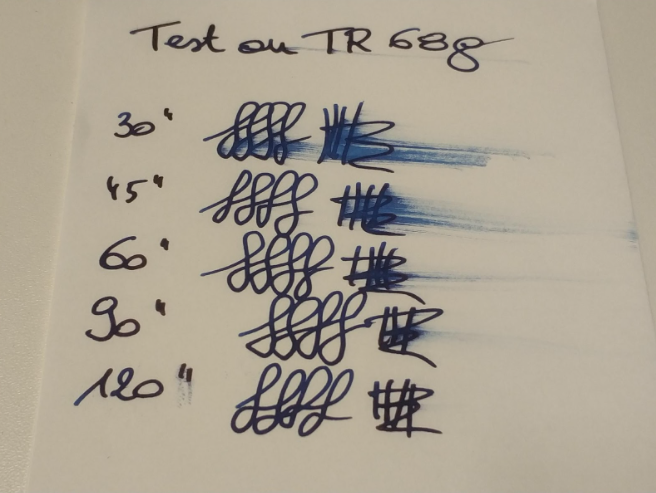
On the other hand you don’t want the ink to dry in your feed when you leave the pen uncapped for a moment. So I prepared a little test. I wrote down the page setup and laid the pen aside (uncapped) for 30 seconds and then wrote the first line. Then the pen was put aside again for 45 seconds before writing the second line. I did the same with an interval of 60, 90, 120… seconds and stopped the test when I noticed an effect like a harder start or a skipping start.
I tested this first with the Sheaffer but this pen has such a wet nib that the result wasn’t really reliable. There was almost no effect after 10 minutes. So I filled another pen, an Osprey Milano with F nib. Only after the interval of 5 minutes laying uncapped on my desk there was a noticeable effect. So somehow the ink dries rather fast on paper, but not in your pen/feed.
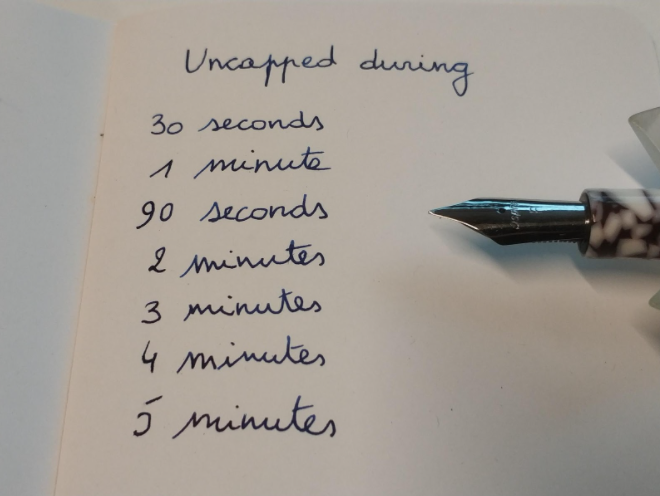
The ink flow
In the Sheaffer I got a real good flow, giving a wonderful smooth writing experience. This could be expected because this M nib works great with almost every ink. Also with the F nib of the Osprey Milano I got a nice writing feeling, laying down a good amount of ink. The flow is a bit less in the Osprey Scholar with flex-insert, so railroading occurs when doing maximal flex.
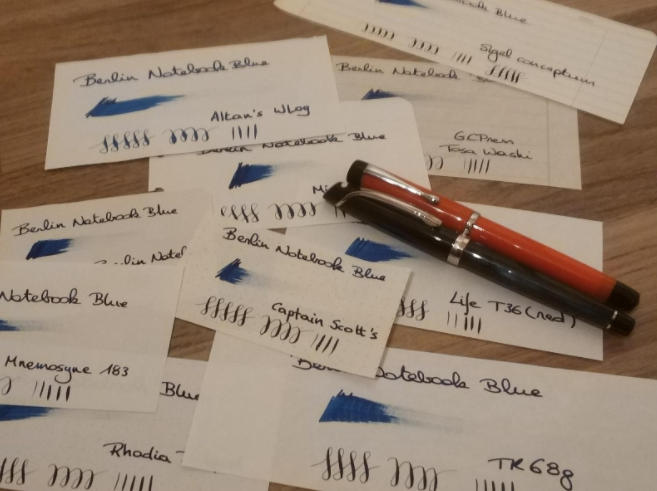
Overall conclusion
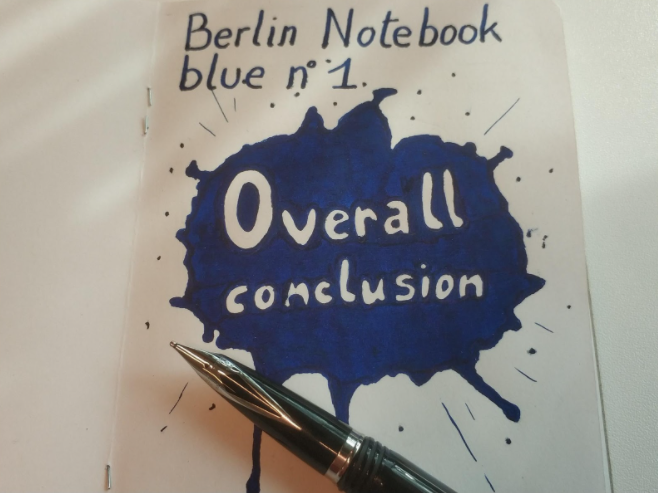
I always have at least one pen inked with a darker blue ink, not because it is my favourite colour, but because it is a rather neutral colour that also can be used in a more formal setting like at work. And for this kind of setting this ink is marvellous. No spectacular sheen or strange colour, you don’t need to cap your pen immediately every time you stop for a minute to think or get a cup of coffee. And the ink dries rather fast, so there is less chance for smudges.
Is this going to be my favourite ink? No, this ink doesn’t make my heart beat any faster. I just love heavy sheening inks to use in writing at home or making some arty stuff.
Am I going to buy this ink? Probably yes, because it has some real good characteristics for use as an office ink.
And it looks for me just that bit more special than the standard blue inks I’ve used so far.
